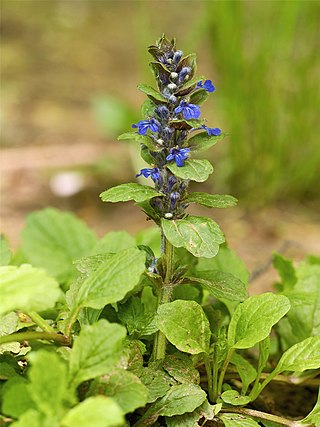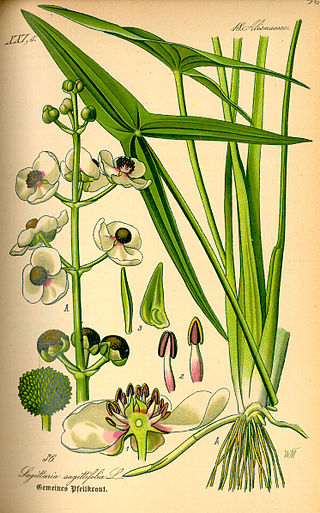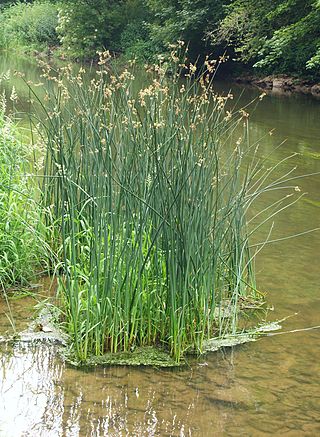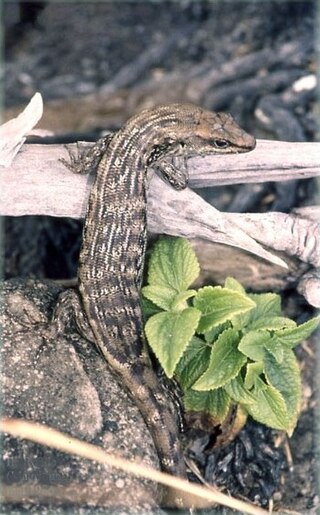
The Polygonaceae are a family of flowering plants known informally as the knotweed family or smartweed—buckwheat family in the United States. The name is based on the genus Polygonum, and was first used by Antoine Laurent de Jussieu in 1789 in his book, Genera Plantarum. The name may refer to the many swollen nodes the stems of some species have, being derived from Greek [poly meaning 'many' and gony meaning 'knee' or 'joint']. Alternatively, it may have a different origin, meaning 'many seeds'.

Hornbeams are hardwood trees in the plant genus Carpinus in the family Betulaceae. The 30–40 species occur across much of the temperate regions of the Northern Hemisphere.

Lévis is a city in eastern Quebec, Canada, located on the south shore of the St. Lawrence River, opposite Quebec City. A ferry links Old Quebec with Old Lévis, and two bridges, the Quebec Bridge and the Pierre-Laporte Bridge, connect western Lévis with Quebec City.

Hepatica is a genus of herbaceous perennials in the buttercup family, native to central and northern Europe, Asia and eastern North America. Some botanists include Hepatica within a wider interpretation of Anemone.

Pyrus pyrifolia is a species of pear tree native to southern China and northern Indochina that has been introduced to Korea, Japan and other parts of the world. The tree's edible fruit is known by many names, including Asian pear, Persian pear, Japanese pear, Chinese pear, Korean pear, Taiwanese pear, apple pear, zodiac pear, three-halves pear, papple, naspati and sand pear. Along with cultivars of P. × bretschneideri and P. ussuriensis, the fruit is also called the nashi pear. Cultivars derived from Pyrus pyrifolia are grown throughout East Asia, and in other countries such as India, Pakistan, Nepal, Australia, New Zealand, and the United States. Traditionally in East Asia the tree's flowers are a popular symbol of early spring, and it is a common sight in gardens and the countryside.

Ottawa City Council is the governing body of the City of Ottawa, Ontario, Canada. It is composed of 24 city councillors and the mayor. The mayor is elected at large, while each councillor represents wards throughout the city. Council members are elected to four-year terms, with the last election being on October 24, 2022. The council meets at Ottawa City Hall in downtown Ottawa. Much of the council's work is done in the standing committees made up of sub-groups of councillors. The decisions made in these committees are presented to the full council and voted upon.

Ajuga, also known as bugleweed, ground pine, carpet bugle, or just bugle, is a genus of flowering plants in the Ajugeae tribe of the mint family Lamiaceae. There are over 60 species of annual or perennial, mostly herbaceous plants. They are native to Europe, Asia, Africa, and Australia.

Fallopia is a genus of about 12 species of flowering plants in the buckwheat family, often included in a wider treatment of the related genus Polygonum in the past, and previously including Reynoutria. The genus is native to temperate and subtropical regions of the Northern Hemisphere, but species have been introduced elsewhere. The genus includes species forming vines and shrubs.

Complexe Desjardins is a mixed-use office, hotel, and shopping mall complex located in Montreal, Quebec, Canada, in the Quartier des spectacles area of Saint Catherine Street. The project was designed to develop the eastern end of downtown Montreal, it is located in the quadrilateral formed by Saint Catherine, Saint-Urbain, Jeanne Mance and René Lévesque Boulevard.

Sagittaria is a genus of about 30 species of aquatic plants whose members go by a variety of common names, including arrowhead, duck potato, swamp potato, tule potato, and wapato. Most are native to South, Central, and North America, but there are also some from Europe, Africa, and Asia.

Schoenoplectus is a genus of plants in the sedge family with a cosmopolitan distribution. Note that the name bulrush is also applied to species in the unrelated genus Typha as well as to other sedges. The genus Schoenoplectus was formerly considered part of Scirpus, but recent phylogenetic data shows that they are not closely related.

Weigela is a genus of between six and 38 species of deciduous shrubs in the family Caprifoliaceae, growing to 1–5 m (3–15′) tall. All are natives of eastern Asia. The genus is named after the German scientist Christian Ehrenfried Weigel.

Albizia julibrissin, the Persian silk tree, pink silk tree, or mimosa tree, is a species of tree in the family Fabaceae, native to southwestern Asia and eastern Asia.

Mentha arvensis, the corn mint, field mint, or wild mint, is a species of flowering plant in the mint family Lamiaceae. It has a circumboreal distribution, being native to the temperate regions of Europe and western and central Asia, east to the Himalaya and eastern Siberia, and North America. Mentha canadensis, the related species, is also included in Mentha arvensis by some authors as two varieties, M. arvensis var. glabrata Fernald and M. arvensis var. piperascens Malinv. ex L. H. Bailey.

Saka, or Sakan, was a variety of Eastern Iranian languages, attested from the ancient Buddhist kingdoms of Khotan, Kashgar and Tumshuq in the Tarim Basin, in what is now southern Xinjiang, China. It is a Middle Iranian language. The two kingdoms differed in dialect, their speech known as Khotanese and Tumshuqese.

Chaenomeles speciosa, the flowering quince, Chinese quince or Japanese quince, is a thorny deciduous or semi-evergreen shrub native to eastern Asia. It is taller than another commonly cultivated species, C. japonica, usually growing to about 2 m. The flowers are usually red, but may be white or pink. The fruit is a fragrant, hard pome that resembles a quince.

Charles Edward Telfair was an Irish botanist.

Helosciadium nodiflorum, fool's watercress, is a flowering plant found in ditches or streams, as well as fresh and brackish-water wetlands native to western Europe. It is not poisonous to humans but it could be easily confused with the allegedly poisonous lesser water parsnip.

Reynoutria is a genus of flowering plants in the Polygonaceae, also known as the knotweed or buckwheat family. The genus is native to eastern China, Eastern Asia and the Russian Far East, although species have been introduced to Europe and North America. Members of the genus, including R. japonica and its hybrid with R. sachalinensis, are highly invasive plants.


















